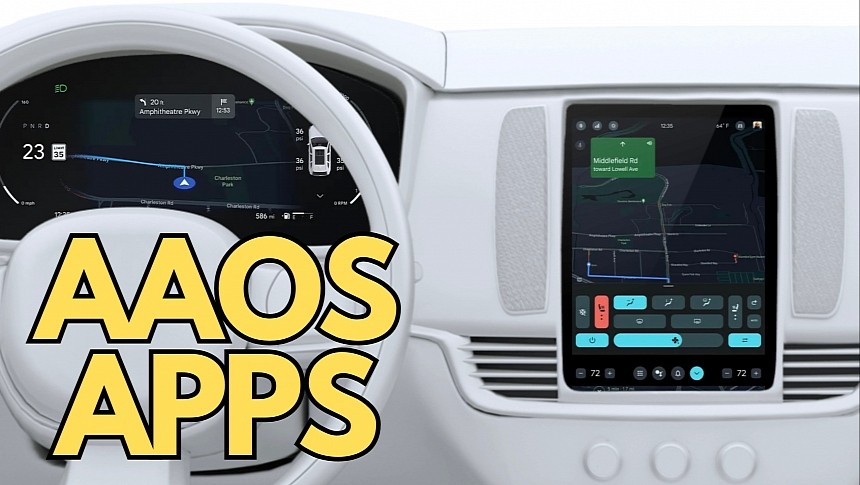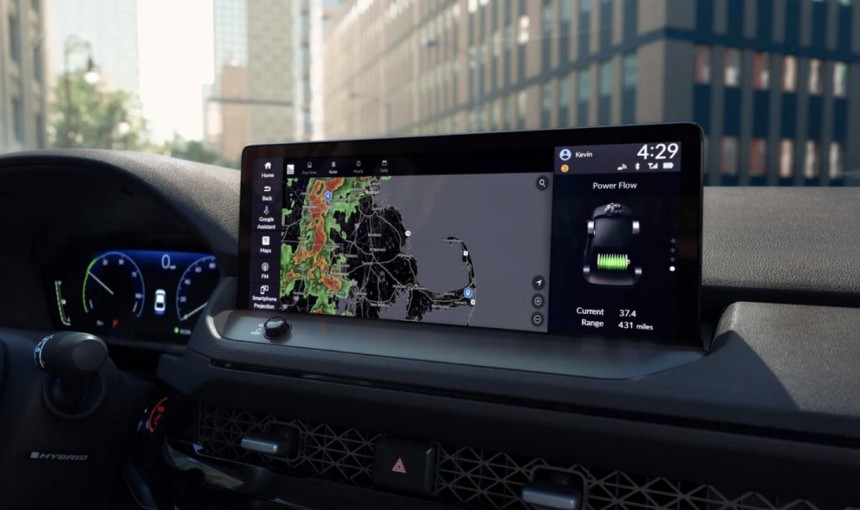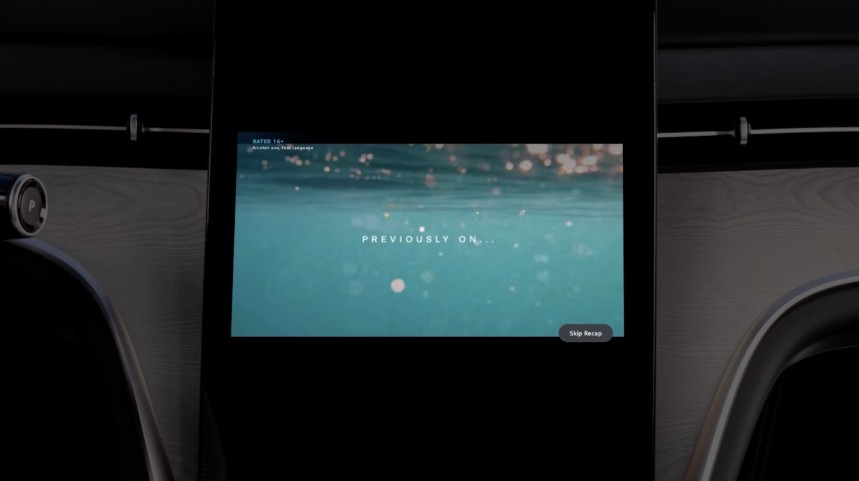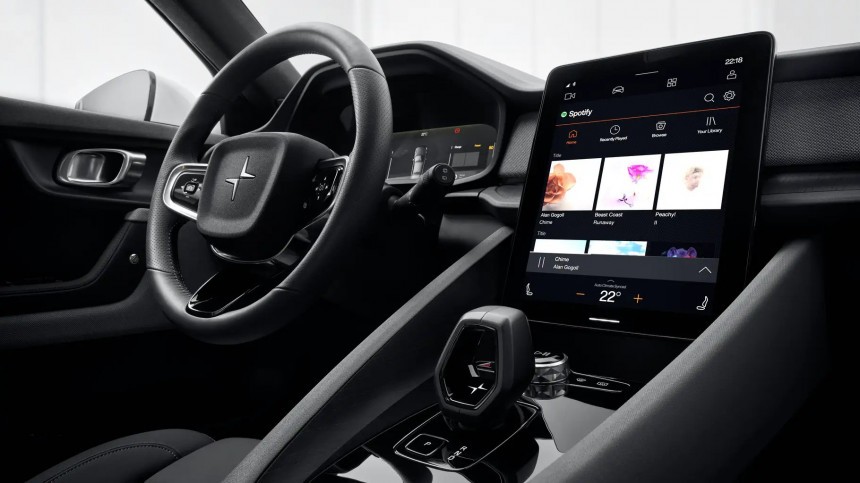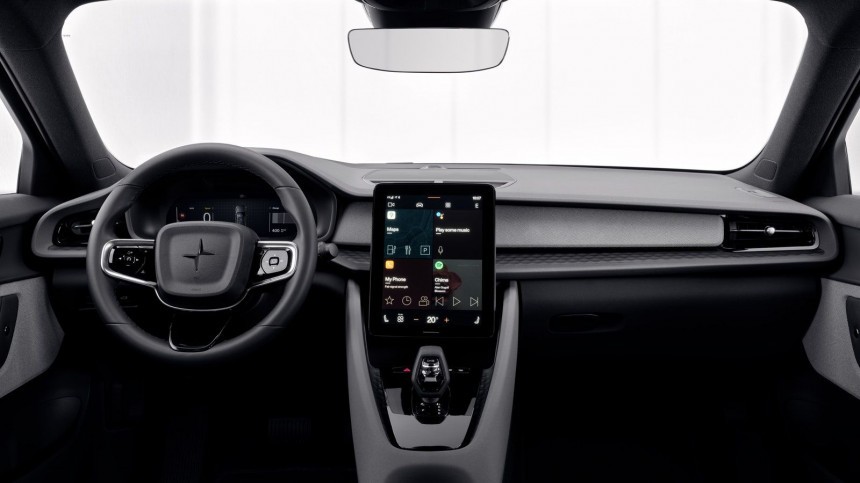The Android Automotive adoption keeps growing, with more carmakers installing the operating system in their cars. In addition to General Motors, whose controversial decision to block Android Auto and CarPlay could easily backfire, Ford, Lincoln, Polestar, and Renault also offer AAOS in select models.
One of the main benefits of adopting Android Automotive is offering access to an app store. The Google Play Store app comes pre-loaded with Android Automotive only if the carmaker installs GAS (Google Automotive Services). Otherwise, every carmaker can install any app store, including third-party alternatives to the Play Store.
GAS is Google's suite of automotive services, providing car manufacturers with a selection of pre-loaded solutions for essential capabilities, including Google Assistant for voice commands, Google Maps for navigation, and the Play Store for app installation.
Google also allows carmakers to install Android Automotive without GAS, in which case they must turn to alternative solutions, as mentioned above.
Google tried to make the app installation process as seamless and straightforward as possible, so the Play Store is pre-loaded with Android Automotive if the carmaker adopted GAS. Look for the Play Store icon (the same as on your mobile device) on Android Automotive and tap it to launch the store.
The familiar interface is retained on Android Automotive, and you can use the search option in the top right corner to quickly find an app.
However, the number of apps currently available on Android Automotive is still limited. While more developers bring their apps to Google's automotive OS, and the essentials are already covered, Android Automotive isn't much different from Android Auto from an app collection perspective. The Android Auto app collection might be even larger, as the phone mirroring platform has been around for more years than AAOS.
Google says your best option if an app is missing from Android Automotive is to contact the developer and request an update. However, some apps might already be available on the Play Store but not be compatible with your car. Certain apps are exclusive to specific Android Automotive vehicles, so they won't show up in Play Store searches.
Installing an application from the Play Store is a few-tap job. Open the listing, look for the "Install" button, and tap it to begin the process. Depending on your Internet connection speed and the app size, it should be completed in seconds.
Android Automotive also allows users to purchase apps from the Play Store, though you'll have to complete the process from your Android device or browser. When the purchase is finalized, the app icon should become available in the app drawer on Android Automotive.
Some of our readers told me that installing apps on Android Automotive sometimes fails without a straightforward error message, making it impossible to complete the process.
Google says the easiest way to troubleshoot this error is to check the Internet connection and clear the Play Store, Download Manager, and Google Play Services cache and data. If nothing works, you can try turning the engine off and on, as the Android Automotive-powered infotainment system would also restart.
One potential workaround is to remove your Google account from the vehicle and reconfigure everything from scratch. However, doing this is a major pain in the neck, as once you remove the Google account from the car, all your apps are gone.
Like other Android devices, Android Automotive supports automatic app updates, so you can get the latest version of an app when an Internet connection is available.
Google is betting big on the app collection for its long-term Android Automotive strategy, hoping more developers would join the club by bringing their apps to the car. The company has also tried to provide Android Automotive with exclusive apps, though some of them would make sense on Android Auto, too.
YouTube is the best example. The video-sharing app is already available on Android Automotive but blocked on Android Auto, with Google allowing drivers of cars running the full operating system to watch videos when the vehicles are parked. When they start driving, YouTube is automatically blocked for safety reasons.
Android Auto should also support YouTube because Google has the technical means to implement a similar approach. However, it doesn't mean YouTube remains blocked on Android Auto, as users still found several ways to unlock the app and watch their favorite videos even without Android Automotive.
Google also brought Chrome to Android Automotive to allow drivers to browse the web when the vehicle is parked. Google Chrome is currently the world's number one browser on desktop and mobile, and landing in cars with the familiar UI, tab support, and synchronization support to import data from other Android devices.
Google has already promised to install Android Automotive in more vehicles, with further announcements expected this year. The latest announcements include Ford, Lincoln, and Buick, all projected to begin selling Android Automotive-powered models in 2024.
GAS is Google's suite of automotive services, providing car manufacturers with a selection of pre-loaded solutions for essential capabilities, including Google Assistant for voice commands, Google Maps for navigation, and the Play Store for app installation.
Google also allows carmakers to install Android Automotive without GAS, in which case they must turn to alternative solutions, as mentioned above.
The familiar interface is retained on Android Automotive, and you can use the search option in the top right corner to quickly find an app.
However, the number of apps currently available on Android Automotive is still limited. While more developers bring their apps to Google's automotive OS, and the essentials are already covered, Android Automotive isn't much different from Android Auto from an app collection perspective. The Android Auto app collection might be even larger, as the phone mirroring platform has been around for more years than AAOS.
Google says your best option if an app is missing from Android Automotive is to contact the developer and request an update. However, some apps might already be available on the Play Store but not be compatible with your car. Certain apps are exclusive to specific Android Automotive vehicles, so they won't show up in Play Store searches.
Android Automotive also allows users to purchase apps from the Play Store, though you'll have to complete the process from your Android device or browser. When the purchase is finalized, the app icon should become available in the app drawer on Android Automotive.
Some of our readers told me that installing apps on Android Automotive sometimes fails without a straightforward error message, making it impossible to complete the process.
Google says the easiest way to troubleshoot this error is to check the Internet connection and clear the Play Store, Download Manager, and Google Play Services cache and data. If nothing works, you can try turning the engine off and on, as the Android Automotive-powered infotainment system would also restart.
Like other Android devices, Android Automotive supports automatic app updates, so you can get the latest version of an app when an Internet connection is available.
Google is betting big on the app collection for its long-term Android Automotive strategy, hoping more developers would join the club by bringing their apps to the car. The company has also tried to provide Android Automotive with exclusive apps, though some of them would make sense on Android Auto, too.
YouTube is the best example. The video-sharing app is already available on Android Automotive but blocked on Android Auto, with Google allowing drivers of cars running the full operating system to watch videos when the vehicles are parked. When they start driving, YouTube is automatically blocked for safety reasons.
Google also brought Chrome to Android Automotive to allow drivers to browse the web when the vehicle is parked. Google Chrome is currently the world's number one browser on desktop and mobile, and landing in cars with the familiar UI, tab support, and synchronization support to import data from other Android devices.
Google has already promised to install Android Automotive in more vehicles, with further announcements expected this year. The latest announcements include Ford, Lincoln, and Buick, all projected to begin selling Android Automotive-powered models in 2024.
